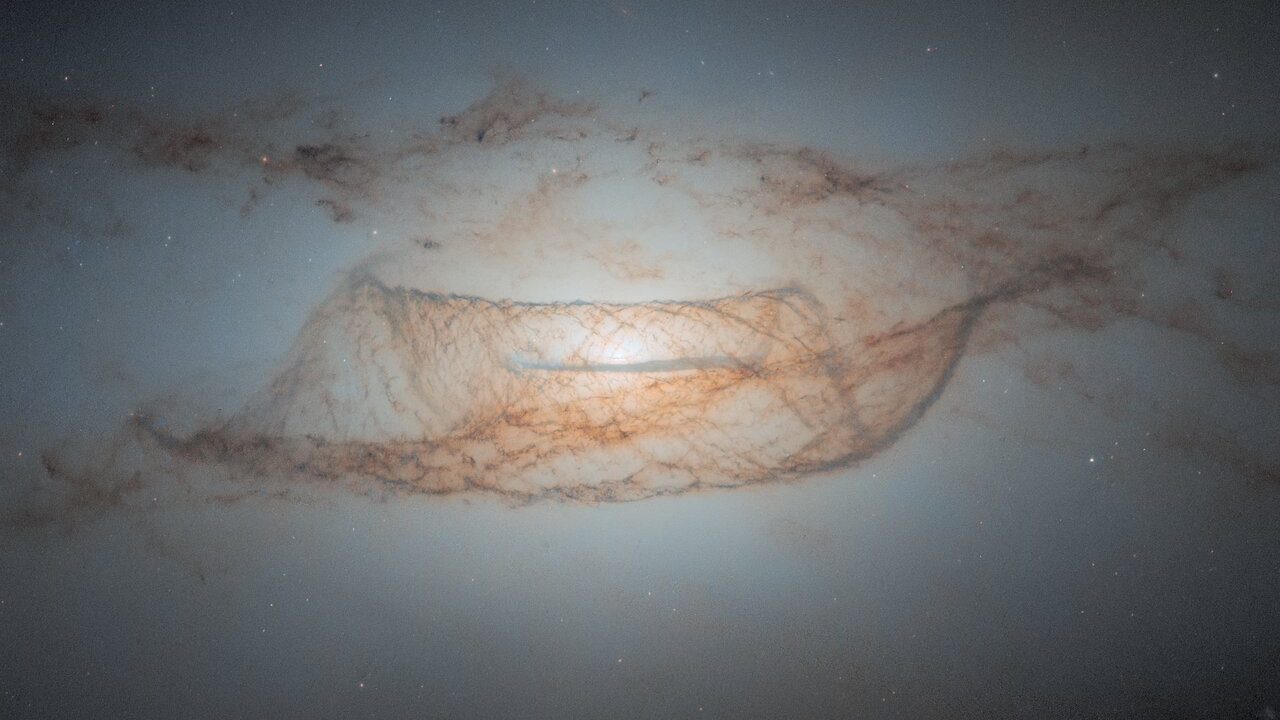
A new Hubble image highlights the intricacies of a distant galaxy glowing with a bright white core surrounded by complex dust structures.
A new image from the Hubble Space Telescope captures the sharpest view yet of the lenticular galaxy NGC 4753. The photo, released on Monday (May 13), offers a nearly edge-on view of the galaxy, revealing its bright central bulge.
Lenticular galaxies are a cross between spirals and ellipticals; they exhibit an elliptical shape but have ill-defined spiral arms. Given NGC 4753's low-density environment and complex structure, this particular galaxy provides astronomers an opportunity to study different theories surrounding how lenticular galaxies form, according to a statement from the European Space Agency (ESA). (Hubble is a joint mission of NASA and ESA.)
Related: The best Hubble Space Telescope images of all time!
The galaxy, located roughly 60 million light-years from Earth, is situated within the Virgo II Cloud, which hosts a group of roughly 100 galaxies and galaxy clusters. It was first discovered by the astronomer William Herschel in 1784.
NGC 4753 is believed to be the product of a galactic merger between a larger galaxy and a nearby dwarf companion roughly 1.3 billion years ago. As the galaxies approached each other, the larger galaxy's strong gravitational forces likely pulled in stars, gas and dust from its smaller neighbor, resulting in the warped elliptical shape and distinct dust lanes observed today.
Interwoven among the galaxy's dusty tendrils, stars and bright white core is dark matter, which is believed to comprise most of the mass in the galaxy, concentrated in a slightly flattened spherical halo, according to the statement.
"Dark matter is a form of matter that cannot currently be observed directly, but is thought to comprise about 85% of all matter in the universe," ESA officials said in the statement. "It is referred to as 'dark' because it does not appear to interact with the electromagnetic field and therefore does not seem to emit, reflect or refract light."
Observations of NGC 4753 also suggest that the galaxy hosted a Type Ia supernova — a massive stellar explosion that occurs in binary systems in which one of the stars is a stellar corpse called a white dwarf that has exhausted its nuclear fuel.
"These types of supernovae are extremely important, as they are all caused by exploding white dwarfs which have companion stars, and always peak at the same brightness — five billion times brighter than the sun," ESA officials said in the statement. "Knowing the true brightness of these events, and comparing this with their apparent brightness, gives astronomers a unique chance to measure distances in the universe."







